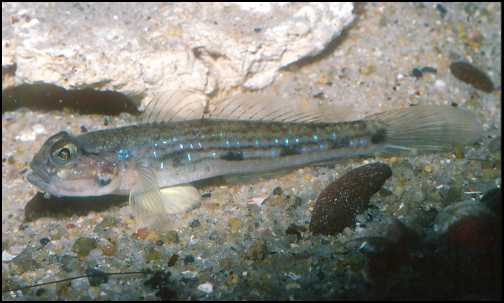Invasive species spread into New Zealand waters
26 June 2002
There are more than 150 exotic marine species in New Zealand’s coastal waters already, and at least one new species arrives every year according to a report in the National Institute of Water & Atmospheric Research’s (NIWA) new Aquatic Biodiversity & Biosecurity newsletter, published today.
These exotic species mostly arrive on the hulls of visiting vessels and have the potential to cause significant economic and environmental damage. That is one of the reasons why NIWA has just established a new National Centre for Aquatic Biodiversity and Biosecurity – to help understand the effects of these exotic invaders, and assess the possible ways of controlling them.
The Centre will focus on aquatic biodiversity research, threats to biodiversity from non-indigenous species already in New Zealand, and from possible new arrivals that could have undesirable impacts on our freshwater and marine communities.
“A key role of the National Centre is to communicate,” says Centre Coordinator Dr Wendy Nelson, “so we can better target and deliver high quality research, and improve collaboration between government agencies, regional and district councils, iwi, industry, and science organisations”.
Dr Nelson says the greatest threat to our biosecurity may actually be ignorance. “For many areas we don’t know what species are out there, and we don’t know what species are coming in on vessels or being brought in by the aquarium industry.” She says the limited number of surveys and shortage of expertise have been major problems.
One of the most striking recent introductions is the Asian paddle crab, which is far more aggressive than New Zealand’s native paddle crab. It was first noticed by two fishers who caught them in flounder nets in the Rangitoto channel in Waitemata Harbour. There are now about twice as many of them in the harbour than the native paddle crab – and they are more widely spread.
“It’s possible that this invasive crab reached New Zealand in the ballast water or ballast intake pipes of vessels, but we may never know for sure, “ says Dr Nelson. “They could also have arrived here as larvae or juveniles on the hulls of vessels, or perhaps from established populations up-current of New Zealand.”
Another recent discovery was a small fish which has become established in subtidal waters in Whangapoua Harbour in the Coromandel, and Waitemata Harbour. This little fish, a goby, has bright iridescent blue spots along its sides, and was caught in shallow muddy areas near seagrass beds and mangroves.
“It probably arrived in ballast water from Australia or further afield. Temperate fish species like the goby are more likely to survive and reproduce in New Zealand than tropical marine fish species because the conditions here are similar to some of the temperate regions where they come from, such as Japan and Korea.”

This goby has made its way into New Zealand's waters, most likely from Australia.
(Photo: Rudie Kuiter)
NIWA recently surveyed over 300 sites in 25 harbours throughout the top half of the North Island and discovered two other Australian gobies established around the east and west coast of northern New Zealand.
“We don’t yet know the full impact
of these invasive species on the New Zealand environment,
but first of all we plan to find out how well established
they are, and then what their role is in the ecosystem and
how they affect our
biodiversity.”


 John Mazenier: Gaffer Tape And Glue Delivering New Zealand’s Mission Critical Services
John Mazenier: Gaffer Tape And Glue Delivering New Zealand’s Mission Critical Services Earthquake Commission: Ivan Skinner Award Winner Inspired By Real-life Earthquake Experience
Earthquake Commission: Ivan Skinner Award Winner Inspired By Real-life Earthquake Experience Reserve Bank: Consultation Opens On A Digital Currency For New Zealand
Reserve Bank: Consultation Opens On A Digital Currency For New Zealand NIWA: Ship Anchors May Cause Extensive And Long-lasting Damage To The Seafloor, According To New Research
NIWA: Ship Anchors May Cause Extensive And Long-lasting Damage To The Seafloor, According To New Research New Zealand Customs Service: A Step Forward For Simpler Trade Between New Zealand And Singapore
New Zealand Customs Service: A Step Forward For Simpler Trade Between New Zealand And Singapore Horizon Research: 68% Say Make Banks Offer Fraud Protection
Horizon Research: 68% Say Make Banks Offer Fraud Protection



